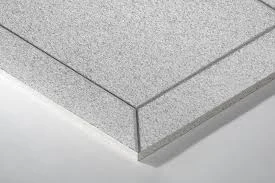- Afrikaans
- Albanian
- Amharic
- Arabic
- Armenian
- Azerbaijani
- Basque
- Belarusian
- Bengali
- Bosnian
- Bulgarian
- Catalan
- Cebuano
- Corsican
- Croatian
- Czech
- Danish
- Dutch
- English
- Esperanto
- Estonian
- French
- German
- Greek
- Hindi
- Indonesian
- irish
- Italian
- Japanese
- Korean
- Lao
- Malay
- Myanmar
- Norwegian
- Norwegian
- Polish
- Portuguese
- Romanian
- Russian
- Serbian
- Spanish
- Swedish
- Thai
- Turkish
- Ukrainian
- Uzbek
- Vietnamese
нов . 12, 2024 17:39 Back to list
ceiling tie wire
Understanding Ceiling Tie Wire An Essential Component in Modern Construction
Ceiling tie wire, often overlooked, plays a crucial role in the structural stability of buildings. This type of wire is primarily used to secure ceiling structures and is essential for maintaining the integrity of both residential and commercial construction. In this article, we will explore what ceiling tie wire is, its applications, materials, and installation practices, as well as its importance in ensuring the safety and durability of ceilings.
What is Ceiling Tie Wire?
Ceiling tie wire is typically composed of high-strength steel and is designed to provide reinforcement to suspended ceilings. It helps to hold ceiling panels and grids in place, effectively supporting the weight of the ceiling materials. The wire is often used in combination with other structural elements, such as hangers, brackets, and studs, to create a stable and secure ceiling.
Applications of Ceiling Tie Wire
One of the primary applications of ceiling tie wire is in suspended or drop ceilings, where tiles are held in place by a grid system. The misconception is that these ceilings are lightweight and do not require substantial support, but ceiling tiles can become heavy, especially if they are moisture-resistant or specifically designed for acoustics. Ceiling tie wire ensures that these tiles remain securely attached to their supporting structures, minimizing the risk of any sagging or collapse.
Ceiling tie wire is also used in various other applications. For instance, in the installation of HVAC systems, it provides additional support to ducts that might otherwise be too heavy for standard hanging systems. In commercial spaces, where the layout may change frequently, tie wires allow for flexible designs without compromising safety.
Materials Used
The most common material used for ceiling tie wire is galvanized steel, known for its strength and resistance to corrosion
. Galvanization is a process that coats steel with zinc to provide a protective layer that helps prevent rusting. This is particularly important for tie wires that might be exposed to humidity or environmental elements.ceiling tie wire

In recent years, alternatives such as stainless steel tie wires have emerged, which offer even greater strength and resistance to corrosion. These materials ensure that the tie wire can handle the stresses of the building environment for years to come without degrading.
Installation Practices
Proper installation of ceiling tie wire is critical to maximizing its effectiveness. It is essential that the wire is cut to the appropriate lengths and attached firmly to both the support framework of the building and the ceiling grid. Construction professionals typically use wire twisting techniques to secure the wire in place, ensuring that it does not loosen over time.
Another critical aspect of installation is adhering to building codes and regulations. Local regulations may dictate specific requirements for the use of ceiling tie wire based on factors such as the type of building, its height, and its usage. Therefore, it is crucial for contractors to familiarize themselves with these codes to ensure compliance and safety.
Importance of Ceiling Tie Wire
The importance of ceiling tie wire cannot be overstated. It acts as a safety feature that prevents potential hazards related to ceiling collapses. In areas prone to seismic activity, for instance, ceiling tie wire becomes an even more critical component, helping to secure the ceiling against movement and providing peace of mind to occupants.
Moreover, tie wire contributes to architectural aesthetics by allowing for sleek and modern ceiling designs while ensuring that the underlying structure is sound. This dual function of providing security while enhancing design flexibility can be seen in many contemporary buildings.
Conclusion
In conclusion, ceiling tie wire is a vital component in the construction and maintenance of safe and durable ceilings. Understanding its applications, materials, installation, and importance is essential for anyone involved in the building industry. As construction standards evolve, recognizing and implementing best practices for safety and design flexibility will ensure that ceiling tie wire continues to be an integral part of modern construction. By prioritizing the use of quality materials and following strict installation guidelines, the industry can contribute to safer and more resilient structures for generations to come.
-
Transform Interiors with PVC Gypsum Ceiling: A Stylish, Durable, and Moisture-Resistant SolutionNewsMay.19,2025
-
The Smart Interior Upgrade: Discover the Durability and Versatility of Gypsum Ceiling Access Panel SolutionsNewsMay.19,2025
-
The Smart Choice for Interior Design: Discover the Value of PVC Gypsum Ceiling SolutionsNewsMay.19,2025
-
Mineral Fiber Ceiling Tiles: The Smart Blend of Performance and AestheticsNewsMay.19,2025
-
Mineral Fiber Ceiling Tiles: The Superior Choice Over Gypsum for Sound and Fire SafetyNewsMay.19,2025
-
Mineral Fiber Ceiling Tiles: Eco-Friendly Strength and Style for Every CeilingNewsMay.19,2025







